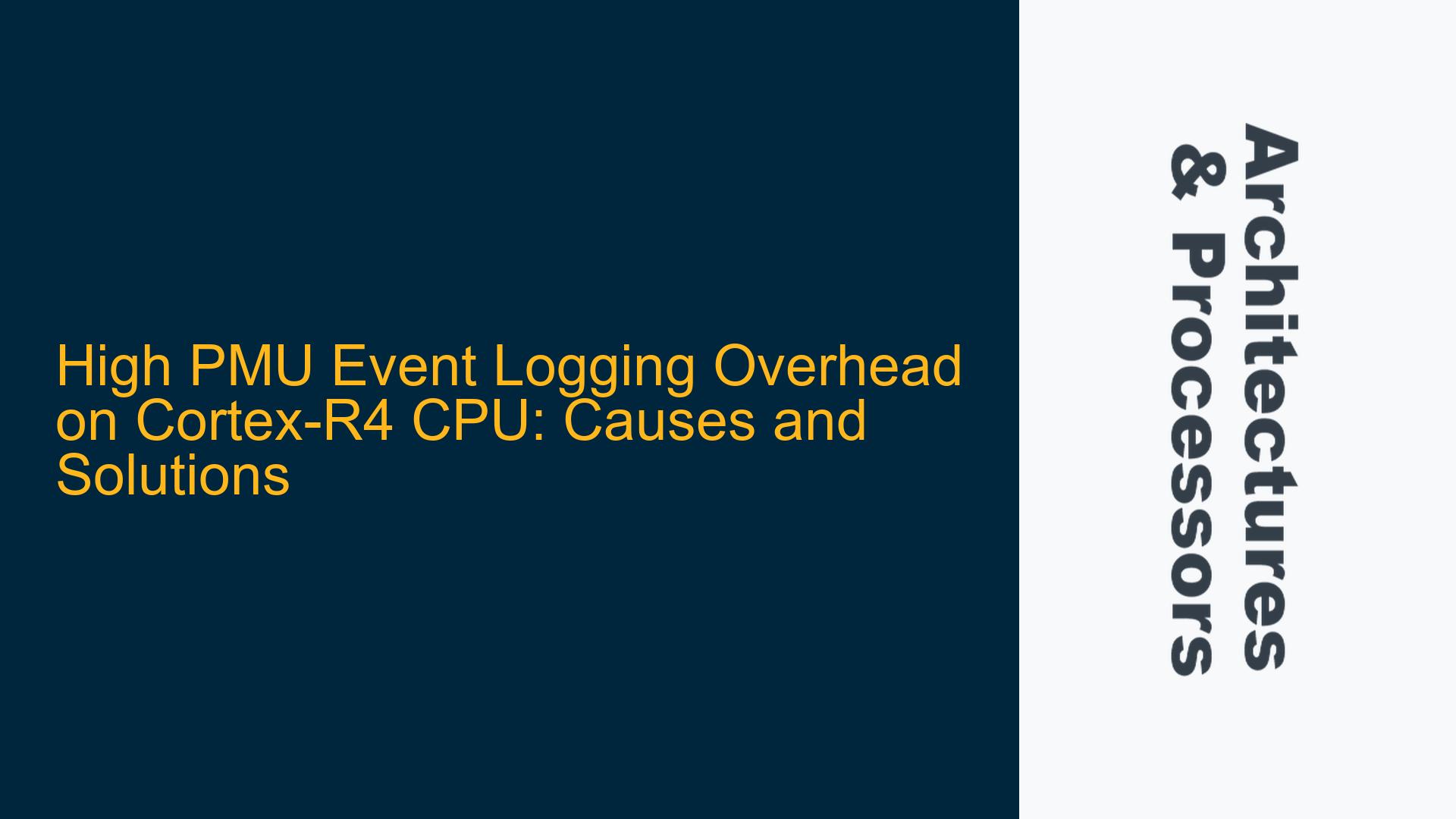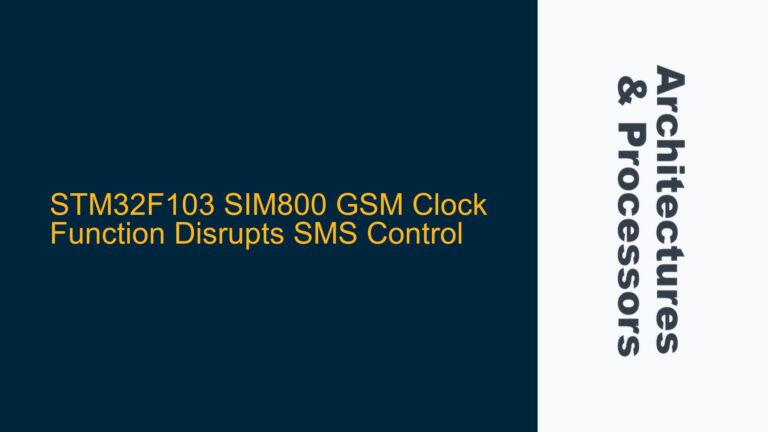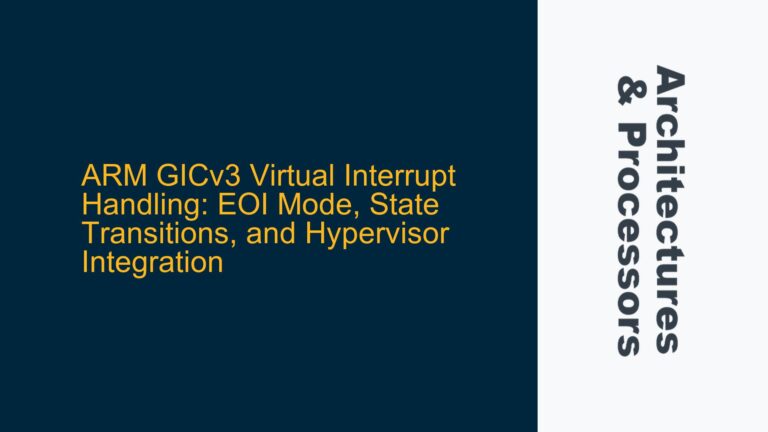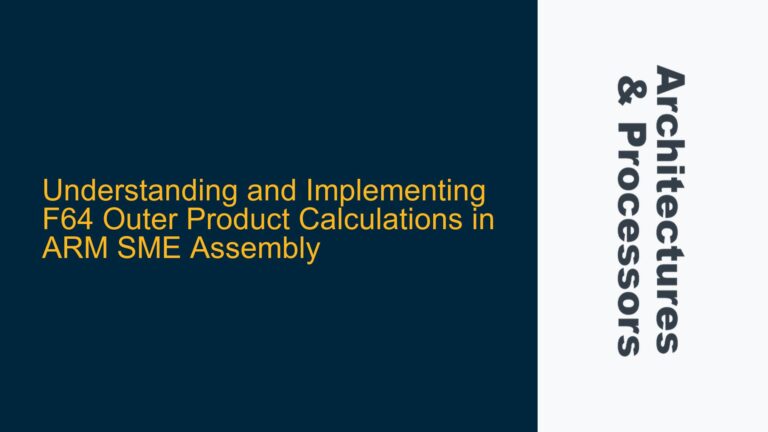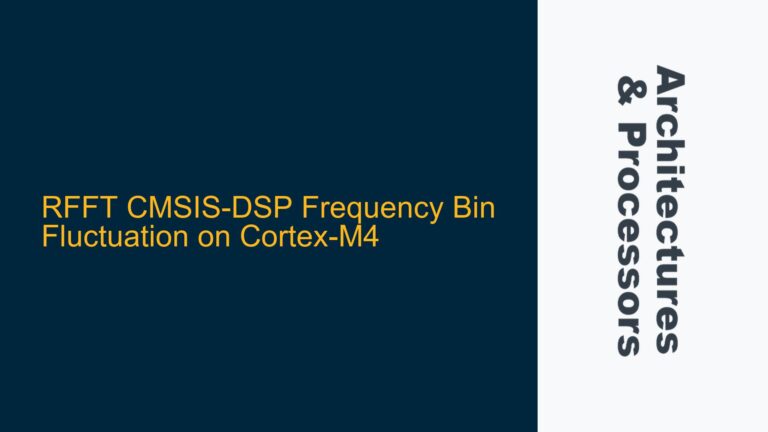PMU Event Logging Overhead Impact on Cortex-R4 CPU Idle Time
The Cortex-R4 processor, a member of ARM’s real-time processor family, is widely used in applications requiring high reliability and deterministic performance, such as automotive systems, storage controllers, and modems. One of its key features is the Performance Monitoring Unit (PMU), which allows developers to profile and optimize system performance by capturing hardware events such as cache misses, branch predictions, and memory accesses. However, enabling PMU event logging can introduce significant overhead, particularly affecting the CPU’s idle time. In the described scenario, enabling PMU event logging resulted in a 33% reduction in CPU idle time, from 50% to 17%. This degradation is primarily due to the increased interrupt handling and context switching required to manage PMU overflow events. Understanding the root causes of this overhead and implementing effective mitigation strategies is critical for maintaining system performance while leveraging the PMU’s diagnostic capabilities.
The PMU operates by counting specific hardware events and generating interrupts when counters overflow. These interrupts force the CPU to exit idle states and execute interrupt service routines (ISRs), which consume CPU cycles and reduce the available idle time. The extent of this overhead depends on several factors, including the sampling rate, the number of events being monitored, and the frequency of overflow interrupts. In the Cortex-R4, the PMU supports a wide range of events, each with its own associated cost in terms of CPU cycles and interrupt frequency. For example, monitoring high-frequency events such as data reads (event 0x06) and data writes (event 0x07) can generate a large number of interrupts, significantly increasing the CPU’s workload. Additionally, external access requests (event 0x43) can further exacerbate the overhead, particularly in systems with high memory traffic.
To quantify the impact of PMU event logging, it is essential to analyze the relationship between the selected events, their sampling rates, and the resulting interrupt frequency. The Cortex-R4’s PMU counters are 32-bit registers, meaning that overflow interrupts occur when the counter reaches its maximum value and wraps around. The frequency of these interrupts is directly proportional to the rate at which the selected events occur. For instance, if a high-frequency event such as data reads is being monitored, the corresponding counter will increment rapidly, leading to frequent overflows and interrupts. Each interrupt requires the CPU to save its current state, execute the ISR, and restore its state, consuming valuable CPU cycles that would otherwise be available for idle time.
PMU Overflow Interrupts and Event-Specific Overhead
The primary cause of the observed CPU idle time degradation is the increased frequency of PMU overflow interrupts. When the PMU is enabled, the selected event counters begin incrementing based on the occurrence of the corresponding hardware events. Once a counter reaches its maximum value, it triggers an overflow interrupt, forcing the CPU to handle the interrupt and reset the counter. This process introduces several sources of overhead, including interrupt latency, context switching, and ISR execution time. In the Cortex-R4, the interrupt latency is relatively low due to its real-time capabilities, but the cumulative effect of frequent interrupts can still significantly impact CPU idle time.
The specific events being monitored also play a critical role in determining the overall overhead. High-frequency events such as data reads and writes generate a large number of interrupts, particularly in systems with high memory traffic. For example, in a modem application, data reads and writes are likely to occur frequently due to the continuous processing of incoming and outgoing data packets. Monitoring these events can result in a high interrupt rate, leading to increased CPU utilization and reduced idle time. Similarly, external access requests, which occur when the CPU accesses external memory or peripherals, can also contribute to the overhead, especially in systems with high external memory bandwidth requirements.
Another factor to consider is the sampling rate of the PMU counters. The Cortex-R4 allows developers to configure the sampling rate by setting the counter overflow thresholds. A lower threshold results in more frequent overflows and interrupts, while a higher threshold reduces the interrupt frequency but may result in less granular event data. In the described scenario, the sampling rate was not explicitly mentioned, but the observed 33% reduction in CPU idle time suggests that the thresholds were set relatively low, leading to frequent interrupts. Adjusting the sampling rate can help balance the trade-off between event data granularity and CPU overhead.
Optimizing PMU Configuration and Reducing Interrupt Overhead
To mitigate the impact of PMU event logging on CPU idle time, several strategies can be employed. The first step is to carefully select the events being monitored, prioritizing those that provide the most valuable diagnostic information while minimizing their impact on CPU performance. For example, if the primary goal is to analyze memory access patterns, it may be sufficient to monitor only data reads or writes rather than both. Similarly, external access requests can be selectively enabled based on the specific requirements of the application.
Another effective strategy is to adjust the sampling rate of the PMU counters. By increasing the overflow thresholds, the frequency of interrupts can be reduced, thereby decreasing the CPU overhead. However, this approach must be balanced against the need for granular event data. In some cases, it may be necessary to experiment with different threshold values to find the optimal balance between data granularity and CPU performance. Additionally, the Cortex-R4 supports the use of multiple counters, allowing developers to distribute the monitoring load across different counters and reduce the interrupt frequency for each counter.
Implementing efficient ISRs is another critical aspect of reducing PMU overhead. The ISR should be designed to minimize its execution time, ensuring that the CPU can quickly return to idle mode after handling the interrupt. This can be achieved by optimizing the ISR code, avoiding unnecessary computations, and leveraging hardware features such as nested vectored interrupts. Additionally, the Cortex-R4’s PMU supports the use of event filtering, which allows developers to selectively enable or disable events based on specific conditions. For example, events can be filtered based on the address range or the type of memory access, reducing the number of interrupts generated by irrelevant events.
Finally, it is important to consider the overall system configuration and workload when analyzing PMU overhead. In some cases, the observed degradation in CPU idle time may be exacerbated by other factors, such as high memory traffic or inefficient task scheduling. By optimizing the system configuration and workload, the impact of PMU event logging can be further reduced. For example, reducing the memory bandwidth requirements or optimizing the task scheduling algorithm can help free up CPU cycles, allowing the system to maintain a higher idle ratio even with PMU event logging enabled.
In conclusion, the observed degradation in CPU idle time when enabling PMU event logging on the Cortex-R4 is primarily due to the increased frequency of PMU overflow interrupts and the associated context switching and ISR execution overhead. By carefully selecting the events being monitored, adjusting the sampling rate, optimizing the ISR, and considering the overall system configuration, the impact of PMU event logging can be effectively mitigated. These strategies enable developers to leverage the diagnostic capabilities of the PMU while maintaining the performance and reliability of the Cortex-R4 processor.
